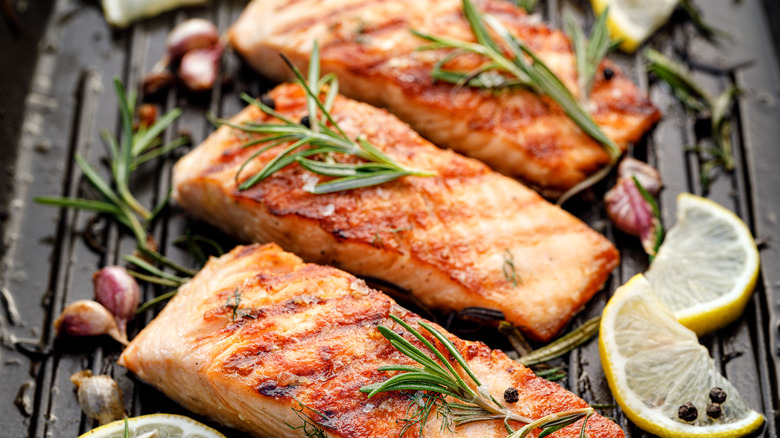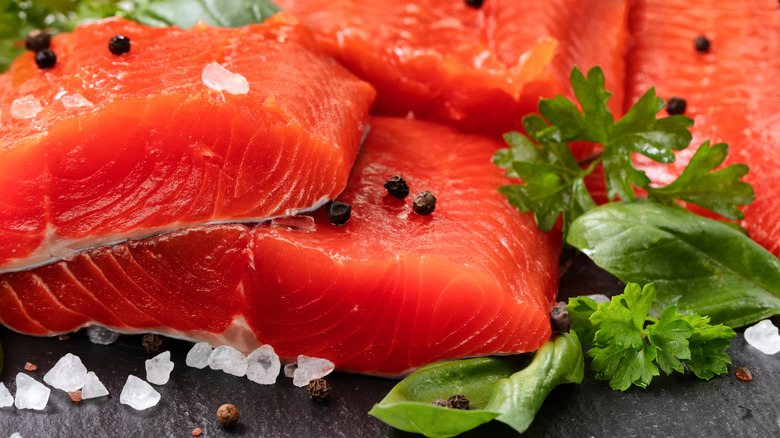The Most Flavorful Type Of Salmon You Can Buy
Salmon is salmon, and it's all really good, right? Yes, but... even in the aquatic world, there's an order to things, especially when judged by human seafood consumers. Some salmon varieties are meatier, some have higher fat content, and others bring bold flavors or velvety textures. But when it comes to the overall most flavorful salmon, a general consensus emerges amongst industry professionals, home-kitchen chefs, seafood anglers, and everyday eaters.
Out of seven Pacific salmon species, five occupy North American waters and are well known for edible deliciousness. The U.S. Geological Survey, a department of the U.S. Department of Interior, identifies those five as coho, chum, sockeye, pink, and Chinook, also known as king salmon. Atlantic salmon is a species all on its own, typically farm-raised instead of wild-caught, and the remaining two Pacific salmons are the Asian species masu and amago.
Chinook (king) salmon reigns supreme in size, weighing as much as 129 pounds with a length up to 4.9, per NOAA Fisheries. They're also the most expensive ones to grace your dinner plate. But a different wild-caught salmon species wins swimmingly when it comes to flavor.
A fish with six names
So popular that it carries one official name and five additional regional monikers (per NOAA), it's the sockeye species that delivers the tastiest salmon flavor. Whether you call it sockeye, red, blueback, redfish, or summer sockeye, it doesn't matter. It's still the same rich, salmon-forward taste touted by Wild Alaskan Company as "the sea-foodie's first choice." Because of its standalone "fishy" flavor depth, it works in myriad recipes and preparation methods, including filleted, baked, steamed, grilled, and smoked, per SFGate. Sockeye even stands up to raw consumption expectations, appearing as the star in many sushi or sashimi meals.
The red-informed sockeye nicknames spring from its wildly dynamic, saturated red, orange, and pink flesh, which happens to carry valuable nutrients. The vibrant color comes from the fish's diet, particularly the carotenoid antioxidant known as astaxanthin, which potentially protects the human nervous system, per The Healthy. That plankton-heavy diet also leads to higher vitamin B12 concentrations than all other salmon varieties. In addition, sockeyes carry high amounts of protein, roughly 18 grams per serving, and bring beneficial anti-inflammatory omega-3 fatty acids to sustain heart, brain, and joint health.
If you love fully engaging with your food and appreciate deeply engrained bold flavors, then sockeye salmon may become your fish-night favorite. Sockeye seasons vary in rivers and lakes, but Action Alaska Sportfishing reveals the prolific wild-caught Alaskan salmon season as running from mid-June to mid-August.

